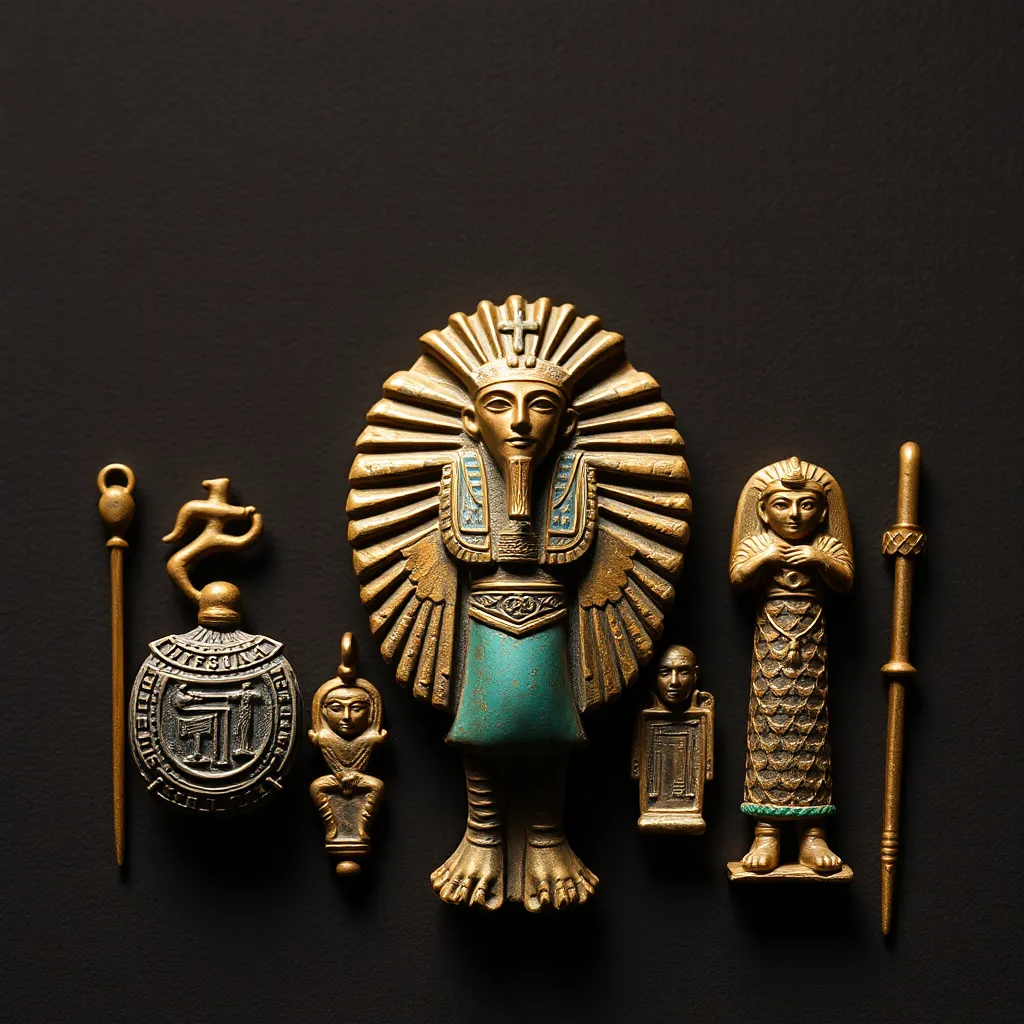The Role of Amulets in Egyptian Social Hierarchy
I. Introduction
Amulets in ancient Egypt were small objects believed to hold protective and magical properties, often inscribed with symbols or images of deities. These artifacts played a significant role in the daily lives of Egyptians, from children to nobles, and were seen as essential for ensuring safety, health, and well-being.
Ancient Egyptian society was marked by a complex social hierarchy, with clear distinctions between the lives of pharaohs, nobles, artisans, and commoners. This hierarchy influenced every aspect of life, including the use of amulets.
This article aims to explore the role of amulets within the framework of Egyptian social hierarchy, examining their historical context, significance, and the insights they provide into the culture of ancient Egypt.
II. Historical Context of Amulets in Ancient Egypt
The use of amulets dates back to the earliest periods of Egyptian civilization, evolving over thousands of years. Initially, these objects were made from natural materials such as stones, bones, and wood. As time progressed, they became more elaborate and were crafted from precious metals and stones.
Amulets were deeply embedded in the religious and cultural practices of ancient Egyptians. They were believed to connect the physical and spiritual worlds, serving as tools for invoking divine protection. The craftsmanship involved in creating these amulets varied widely, with skilled artisans producing intricate designs for the elite, while simpler versions were made for the lower classes.
III. Amulets as Indicators of Social Status
Amulets served not only as protective items but also as indicators of social status within ancient Egyptian society. Different types of amulets were associated with various social classes:
- Pharaohs and Nobility: Amulets crafted from gold and adorned with precious stones, often depicting deities or symbols of power.
- Artisans and Merchants: Amulets made from semi-precious stones or ceramics, featuring traditional motifs.
- Commoners: Simple amulets fashioned from clay or organic materials, often bearing basic symbols.
The complexity and materials used in amulet production varied significantly based on wealth. For instance, the use of gold was primarily reserved for the elite, while the working class utilized more accessible resources.
Notable discoveries, such as the amulets found in the tomb of Tutankhamun, showcase the grandeur associated with royal burials, while simpler finds in commoner graves highlight the democratization of amulet use.
IV. The Religious and Spiritual Significance of Amulets
Amulets were believed to provide protection against evil spirits, promote health, and secure prosperity. Egyptians held strong beliefs in the supernatural, and amulets were seen as essential items for navigating life’s challenges. Each amulet was often associated with specific deities, such as:
- Ankh: Symbol of life and immortality.
- Eye of Horus: Represents protection, royal power, and good health.
- Scarabs: Symbolized rebirth and regeneration.
Rituals surrounding amulet usage varied across social classes, with the elite often involving elaborate ceremonies to consecrate their amulets, while commoners might engage in simpler, more personal rituals.
V. Amulets in Daily Life and Social Interactions
Amulets were ubiquitous in the daily lives of ancient Egyptians. They were worn as jewelry, carried in pockets, or placed in homes. The role of amulets varied among different societal groups:
- Children: Often adorned with protective amulets to safeguard against illness.
- Women: Wore amulets for fertility and protection during childbirth.
- Men: Utilized amulets to ensure success in their trades and protection in battles.
In social gatherings and rituals, amulets served as conversation starters and symbols of status. Their presence also reinforced social bonds, as individuals exchanged or gifted amulets during significant life events.
VI. Amulets in Tombs and Funerary Practices
Amulets held paramount importance in burial customs, reflecting the belief in an afterlife. They were placed in tombs to accompany the deceased, providing protection and ensuring a safe passage to the afterlife.
Differences in amulet types found in elite versus commoner tombs reveal much about social hierarchies:
- Elite Tombs: Contained a variety of elaborate amulets, often made of gold and precious stones, alongside intricate sarcophagi.
- Commoner Tombs: Featured simpler, handmade amulets, often made from clay or stone, reflecting the resources available to the deceased.
Beliefs about the afterlife significantly influenced which amulets were buried with individuals, with many opting for those believed to provide guidance and protection in the journey beyond death.
VII. Archaeological Discoveries and Their Impact on Understanding Social Hierarchy
Archaeological sites across Egypt have revealed a wealth of information regarding amulet usage and their implications for understanding social dynamics. Notable sites include:
- The Valley of the Kings: Rich finds of amulets in royal tombs that illuminate the opulence of the pharaohs.
- Deir el-Medina: A workers’ village where amulets found in commoner graves provide insights into the lives of artisans.
- The Catacombs of Kom el-Shoqafa: Discoveries that reveal the blending of Egyptian and Greco-Roman practices regarding amulet use.
Insights gained from these discoveries continue to shape our understanding of the social hierarchy in ancient Egypt, with future research promising to uncover more about the societal significance of amulets.
VIII. Conclusion
In summary, amulets played a crucial role in ancient Egyptian society, serving both as protective objects and indicators of social status. They reflect the intricate relationship between religion, culture, and social hierarchy in a civilization that revered the afterlife and the supernatural.
The legacy of amulets endures in contemporary culture, with modern jewelry often drawing inspiration from ancient designs and symbolism. The study of these artifacts not only enriches our understanding of ancient Egyptians but also offers valuable insights into human beliefs and practices across time.
Ultimately, the significance of amulets in ancient Egypt extends beyond their material value; they encapsulate the essence of a society deeply intertwined with its spiritual and social fabric.




